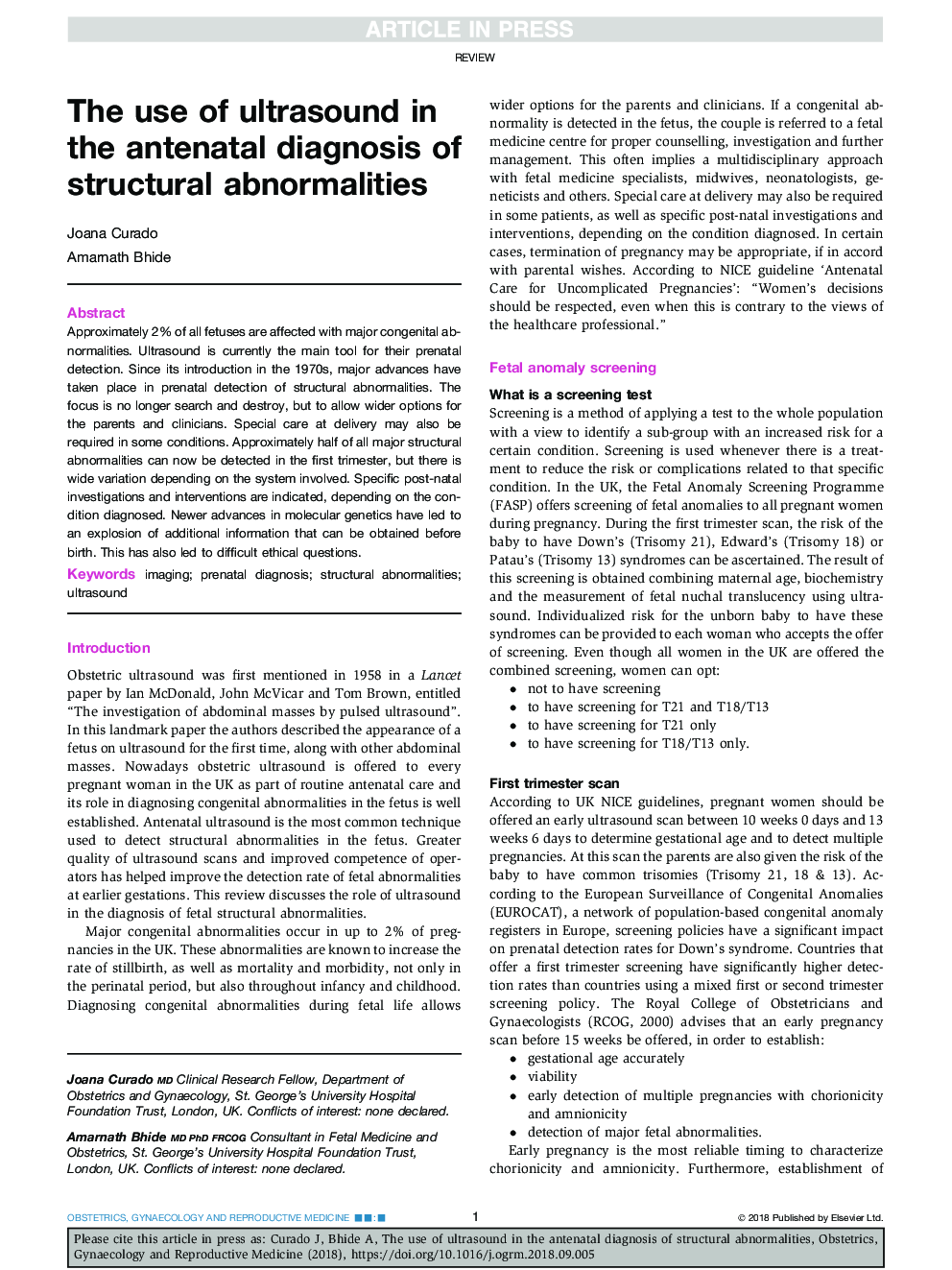| Article ID | Journal | Published Year | Pages | File Type |
|---|---|---|---|---|
| 11008328 | Obstetrics, Gynaecology & Reproductive Medicine | 2018 | 7 Pages |
Abstract
Approximately 2% of all fetuses are affected with major congenital abnormalities. Ultrasound is currently the main tool for their prenatal detection. Since its introduction in the 1970s, major advances have taken place in prenatal detection of structural abnormalities. The focus is no longer search and destroy, but to allow wider options for the parents and clinicians. Special care at delivery may also be required in some conditions. Approximately half of all major structural abnormalities can now be detected in the first trimester, but there is wide variation depending on the system involved. Specific post-natal investigations and interventions are indicated, depending on the condition diagnosed. Newer advances in molecular genetics have led to an explosion of additional information that can be obtained before birth. This has also led to difficult ethical questions.
Related Topics
Health Sciences
Medicine and Dentistry
Obstetrics, Gynecology and Women's Health
Authors
Joana Curado, Amarnath Bhide,
